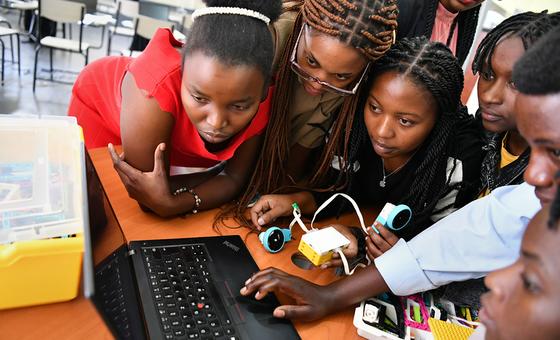During High-Level Week of the UN General Assembly in September, the topic of AI was the focus of several side-events featuring industry experts and UN officials.
In a session entitled “Paving new Pathways for Women in Tech”, Mita Hosali, the Deputy Director of the UN’s News and Media Division, spoke to Sarah Steinberg, Head of Global Public Policy Partnerships at LinkedIn, Tami Bhaumik, Vice President of Civility and Partnerships for Roblox, and Hélène Molinier, Senior Advisor on Digital Cooperation at UN Women.
Ms. Hosali began by describing the lack of female representation in the tech world: overall, around a quarter of those working in the industry are women, dropping to about 11 per cent at the executive level. Women make up just 18 per cent of AI researchers.
Data analysis by the LinkedIn platform, responded Ms. Steinberg, shows that women are not only under-represented, but their numbers are actually declining in terms of hiring rates.
“When it comes to the industries and the fields that are really driving the future – STEM, the green economy, AI – we see women significantly underrepresented and not making sufficient progress in closing that gap”, she warned.
Ms. Steinberg added that, in her view, AI will create new forms of employment, but “we have to be aware of the fact that it’s going to reshape the jobs and skills that we already have”: in the shorter term, she declared, “women are at a greater risk of losing their jobs than men, due to the introduction of AI tools in the wider economy”.

Girls attend a science class at a school in Indonesia.
Giving a voice to the marginalized
Roblox, an online platform for the creation of games and experiences, boasts almost 80 million daily active users. Ms. Bhaumik expressed optimism about the future, and the promise of generative AI in democratizing opportunities for women and girls, and marginalized individuals.
Roblox, she said, can help to “level-set gender equality, making sure those voices who are very, very faint in the background really come to the forefront”.
Hélène Molinier addressed the issue of bias in the development of AI systems, which can have serious real- world consequences. Many products, she said, contain bias, in areas ranging from image generation to chat bot moderation. She reminded the audience that the decision to put these products on the market despite their flaws, remains the responsibility of humans.
Bridging the AI divide
In another side-event, Ms. Hosali interviewed Amandeep Singh Gill, the UN Secretary-General’s Envoy on Technology, on the issue of effective guardrails for AI, and how to ensure that they strike the right balance between providing protection and allowing innovation to flourish.
Existing UN norms, said Mr. Singh, such as international treaties and commitments including the Sustainable Development Goals, are useful guides. However, another concern is the lack of representation in the Global South, in terms of infrastructure and talent.
Mr. Singh called for efforts to bridge the AI divide to be focused on three areas: ensuring that legislators and decision-makers understand the importance of the technology as a public good; providing local researchers and innovators with the necessary data to enable them to build homegrown solutions; and international cooperation in terms of sharing models that have worked in other places.

